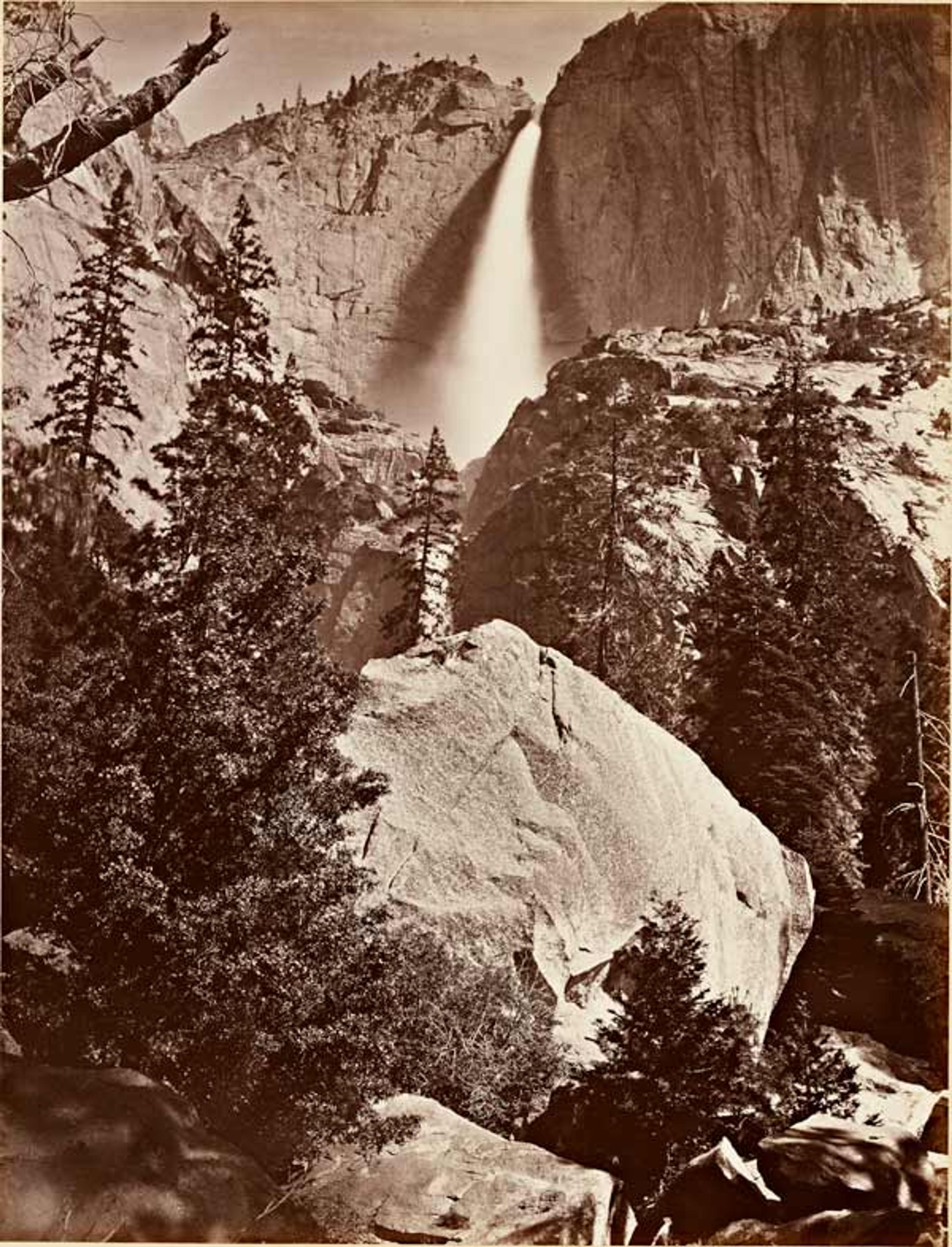
Carleton Watkins (American, 1829–1916). Upper Yosemite Fall, Yosemite, 1865–66. Albumen silver print from glass negative. Lent by Department of Special Collections, Stanford University Libraries
«Yosemite is one of the United States' most popular national parks. It is no shock that Carleton Watkins wanted to photograph the park, with its breathtaking waterfalls, towering trees, and high rocky cliffs. But back in the mid-nineteenth century this was not an easy task. All of his photographs were produced on albumen silver prints from a glass negative—a very rarely seen, old-time photography technique.»
There are thirty-six photographs displayed in the Carleton Watkins: Yosemite exhibition, now on view through February 1. They are all so different, yet so similar. My favorite feature of these photographs is how much of the detail you can see. The fine points of each photo are highlighted individually by the sun's rays hitting the rock formations at unique angles, and through Watkins's silver printing techniques.
The details are emphasized through his artistry. Upon first glance, a waterfall may appear completely white. But upon further observation, you can tell that it's a waterfall due to the visible mist forming at its base. Another observation is the way the sun shines through the trees. The photos accentuate the different shadows and edges of leaves, even though they are in black and white. On the massive rock faces you can see distinct details within them such as rock slabs, ridges, and shrubbery, as well as the unique overall shapes of the rocks within the glacial valley.
In today's digital photography world it is uncommon to find photographs that capture as many details as Watkins's do. It is said that it was these photographs that inspired Abraham Lincoln to sign a bill on June 30, 1864, declaring that the valley should remain untouched, and thus initiating the blueprint for today's National Park Service.
I have been to Yosemite National Park myself, and I have to say this exhibition portrays the park flawlessly. This exhibition is not to be missed!